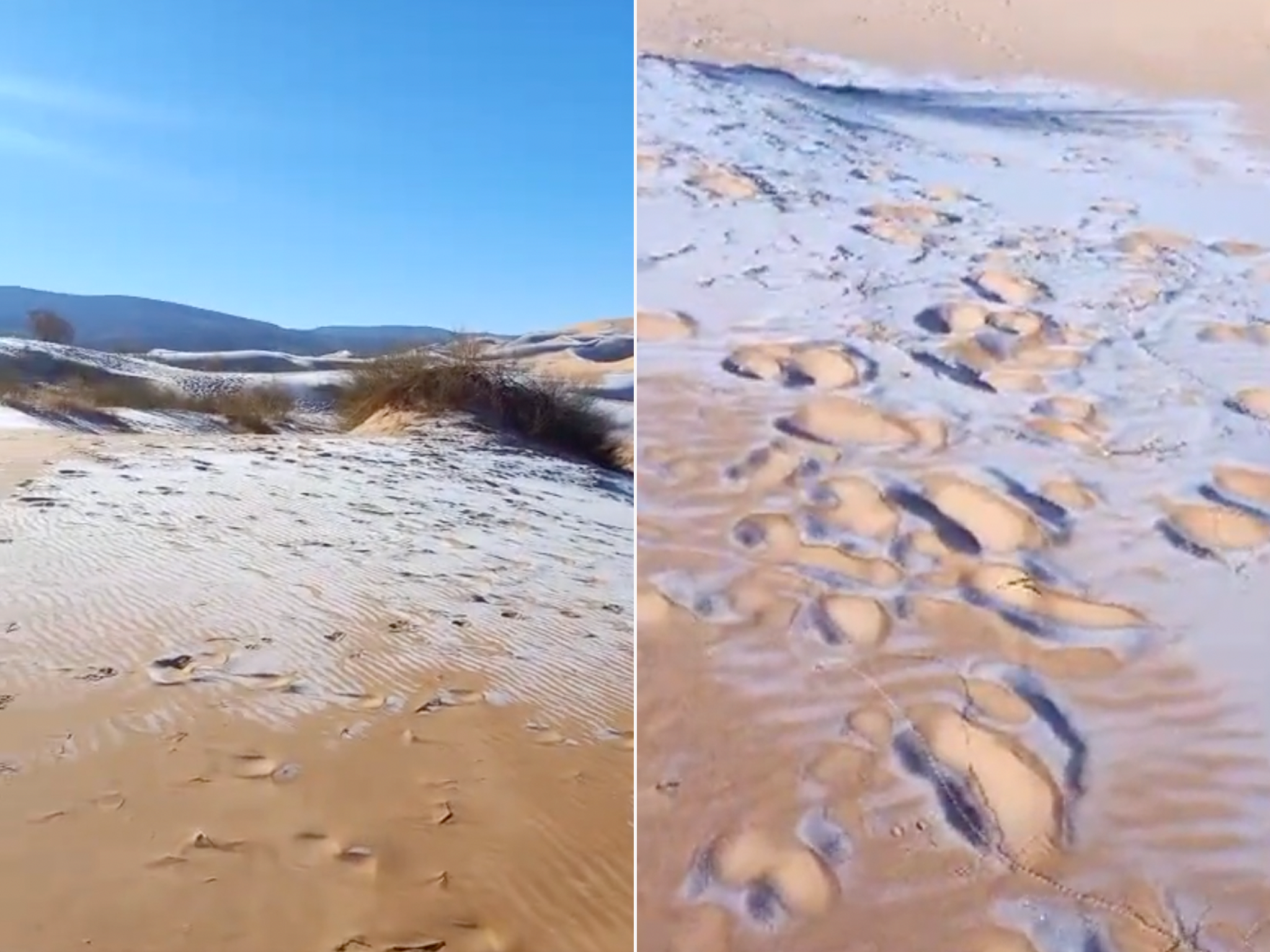It’s snowing in the Sahara Desert - here’s why
The area has experienced snow only a handful of times in the past 40 years
Your support helps us to tell the story
From reproductive rights to climate change to Big Tech, The Independent is on the ground when the story is developing. Whether it's investigating the financials of Elon Musk's pro-Trump PAC or producing our latest documentary, 'The A Word', which shines a light on the American women fighting for reproductive rights, we know how important it is to parse out the facts from the messaging.
At such a critical moment in US history, we need reporters on the ground. Your donation allows us to keep sending journalists to speak to both sides of the story.
The Independent is trusted by Americans across the entire political spectrum. And unlike many other quality news outlets, we choose not to lock Americans out of our reporting and analysis with paywalls. We believe quality journalism should be available to everyone, paid for by those who can afford it.
Your support makes all the difference.Snowfall has left mesmerizing patterns across dunes of the Sahara Desert after temperatures plummeted below zero.
The images, captured earlier this month, shows snow and ice near the town of Ain Sefra in northwest Algeria. The area has experienced snow only a handful of times in the past 40 years.
Ain Sefra is located in the Atlas Mountains, 1,000 meters above sea level and is known as “the gateway to the desert”. It lies in the Naama province of Algeria in the northern part of the Sahara, close to the Moroccan border.
Although temperatures vary in the world’s largest desert, snow and ice are still rare. The only other recorded incidences of snow in Ain Sefra were 1979, 2017, 2018 and last year.
The quantity of snowfall has varied greatly, ranging from a snowstorm which stopped traffic in 1979 to 40cm falling in 2018.

Ain Sefra, founded in 1881 as a French garrison town, sees average high temperatures of around 37C in summer and has seen record lows of -10.2C in winter.
Snow in the Sahara is “unusual but not unheard of”, a UK Met Office spokeswoman previously told The Independent.
It is difficult to determine the role that the climate crisis plays in a single weather event however the field of attribution science has taken leaps forward in recent years.
Identifying climate extremes in the Sahara region also has been hampered by a lack of data and scientific studies, the UN Intergovernmental Panel on Climate Change (IPCC), the world’s leading authority on climate science, reported in 2018.
Hotter, drier conditions, and shifting weather patterns linked to the climate crisis in Africa means that the Sahara Desert is growing in size due to increased desertification.
The climate crisis will not unfold uniformly across regions, meaning that even as temperatures climb in some places, there will also be severe cold events.
Roman Vilfand, head of Russia’s Federal Service for Hydrometeorology and Environmental Monitoring, previously told the Russian state-controlled news agency TASS that the climate crisis could play a role in Saharan snowfall.
“Such situations, including snowfalls in Sahara, a long cold spell in North America, very warm weather in the European part of Russia and sustained rains which sparked flooding in Western European countries, have been occurring more frequently,” he said.
“The high recurrence of these extreme (weather) conditions stems from global warming. It is not just my standpoint, but an opinion shared by members of the Intergovernmental Panel on Climate Change.”
Join our commenting forum
Join thought-provoking conversations, follow other Independent readers and see their replies
Comments